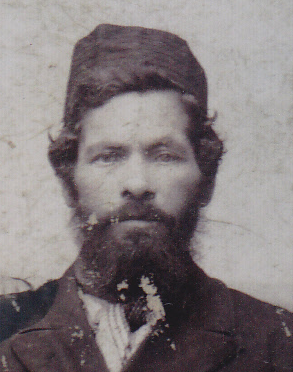By Jessica Feinstein
I was contacted recently by another researcher who found me through the JewishGen Family Finder. Her query was, “I am searching for Nisman family from Parichi. I can go back to my 4 times G-grandfather Haim Nisman.” I was quite sure from this that we were related since there is a Hayim Nisman on our family tree.
Hayim Nisman was married to Haya Nisman who was the daughter of my great-great-grandfather, David Nisman. My notes told me that Haya and Hayim were cousins, but I didn’t know who Hayim’s father was. Further discussion and a sharing of names and stories helped me work out that Hayim’s father Iosif (or Yosel) Nisman is likely to have been the brother of my great-great-grandfather, David. We confirmed that both Nisman families lived in Parichi, Belarus. After the two cousins Haya and Hayim married, they had six children – three boys and three girls.
What we know about my great-great-grandfather David is that he was the son of Girshev Nisman. He was born in Belarus in 1854, married Sarah Volfson in about 1873, and died some time before 1919. (I base the timeframe for his death on the fact that his grandson David was born that year and would not have been named for him if he was still alive.) In 1907 David was recorded in the Belarus Duma Voters List. According to his daughter’s marriage certificate, he worked as a wood merchant or general merchant.
As a result of the information I received from my newly discovered third cousin once removed, I now know the names of many more relations from Parichi, and some of their stories.
What happened to the Nismans in Parichi is revealed in the records of the Yad Vashem Holocaust Database. These Nismans are all relations whose names are included on a List of Jews from Parichi who were murdered near Vysokii Polk on 18 October 1941. This list contains 18 pages and 840 names, including six-year-old Riva Nisman, who was born in 1935 to Iosif’s son Godal and his wife Sosya. According to this evidence, Riva was shot at this murder site along with her family. The entry for Parichi in the Encyclopedia of Jewish Life states that, “In 1939, the Jewish population was 1,881. The Germans occupied Parichi on 5 July 1941, murdering about 140 Jews in August. Subsequently, a ghetto was established, and on 18 Oct, 1,700 were murdered at the nearby village of Vysokii Polk.”
It seems that Haya was evacuated to Tashkent (Uzbekistan) and lived there until her death in the 1970s. So far, I have not found her evacuation card in the database described on the “Jewish Refugees in Tashkent” page on JewishGen. Other Nisman family members ended up in Baku (Azerbaijan), Ekaterinoslav (Ukraine), and New York. I was able to put my new cousin in touch with another relative, who could give her information about another family member who was born in 1920, is still alive, and remembers her great-grandmother.
These connections are particularly precious because the family members who had left Russia were asked by those cousins still in Russia not to send any more letters after 1937 as they feared reprisals. I have been told that all the family letters and photos they had received were torn up during the period of repression, because they were very afraid that somebody would find them.
So, I have more work to do; but I am thrilled that these new family members are now known to me and I have some new photos, too. And it’s all due to the JewishGen Family Finder connection.
February 2019
Abingdon, Oxfordshire, UK
Editor’s Research Notes and Hints
Jessica entered the Nisman name onto the JewishGen Family Finder database. As a result, she was contacted by a previously unknown relative. If you have not yet entered the surnames you are researching, we encourage you to do so.
She found her great-great-grandfather listed in the Belarus Duma Voters List, which can be accessed through the JewishGen Belarus Database.
Records pertaining to her family were found in the Yad Vashem Shoah Names Database.
The fate of her ancestral town at the hands of the Nazis was found in the Encyclopedia of Jewish Life Before and During the Holocaust.
Information regarding family members who were evacuated to Tashkent can be found on JewishGen’s Jewish Refugees in Tashkent page and database.
